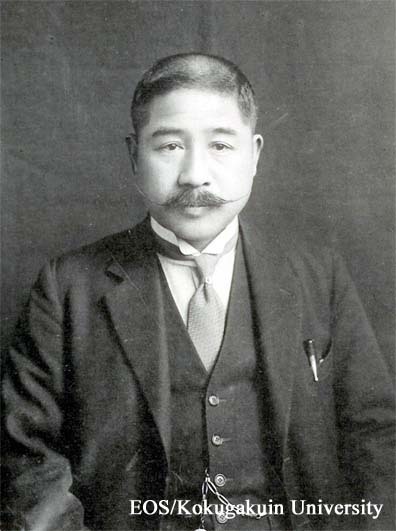- トップ
- Encyclopedia of Shinto
- Kōno Seizō
Encyclopedia of Shinto
| Main Menu: | |
| Links: |
詳細表示 (Complete Article)
| カテゴリー1: | 8. Schools, Groups, and Personalities |
|---|---|
| カテゴリー2: | Personalities |
| Title | Kōno Seizō |
| Text | (1882-1963) Shinto priest (shinshoku) and scholar from the Meiji to the Showa eras. Professor of literature (D.Lit), his epistolary name was Shiun. Born in 1882 as the second son of Kōno Rokurō, Chief Priest (gūji) of the small shrine Tamashiki Jinja located in the town of Kisai, Kita-Saitama District, Saitama Prefecture. Kōno graduated from Kokugakuin's School of Education in 1905, in the department of Japanese Language, Classical Chinese Literature, and History, and thereafter became a priest at Tamashiki Jinja. He re-entered Kokugakuin to study morality and ethics at the graduate level, completing his degree in 1908. Beginning in 1918, he served at Kokugakuin as a lecturer and Section Head of Academic Affairs (Kyōmu Kachō), and in 1920 he was appointed professor. In 1935, he became the first Kokugakuin University graduate to become its President, a post he held until 1942. After World War II, he resigned from his professorship at Kokugakuin, and was also branded as guilty of behavior unbecoming a public official for his role during the war in "promoting citizens' morality" as a member of the Ministry of Education's People's Spiritual Cultural Institute (Kokumin Seishin Bunka Kenkyūjo). Kōno was officially pardoned in 1951 and reinstated as Professor at Kokugakuin University's Graduate School. From 1955, he helped establish and administer the University's Institute for Japanese Culture and Classics, and edited the Shintō yōgoshū (Glossary of Shinto Terminology) until his final years. Outside the University, he served as an advisor during the establishment of the Association of Shinto Shrines (Jinja Honchō), conducted research on ritual institutions (saishi seido) and the shrine ranking system (shakaku seido), and in his capacity as President of the Saitama Shrine Association, he devoted himself to fostering the education of Shinto priests in his native Saitama Prefecture. Kōno's research ranged from the theory of national polity (kokutairon) to popular religion and apocryphal texts, but his most characteristic work was done on the history of divinities (jingi) and Shinto propagation in the early modern (Tokugawa) era. His massive collection of documents from Japan's early modern period (catalogued in Kokugakuin University's Institute for Japanese Culture and Classics' Catalog of the Kōno Seizō Memorial Collection) is an invaluable resource. Kōno died January 8, 1983 at the age of eighty-two. He was the author of Kokumin dōtokushiron (Discourse on the History of Civic Morality); Shintō no kenkyū (Shinto Research); Nihon seishin hattatsushi (History of the Development of Japanese Spirituality); Kokugaku no kenkyū (Research on National Learning); Kokutai kannen no shiteki kenkyū (Historical Research on the Notion of National Polity); Motoori Norinaga; Kujitaiseikyō ni kan suru kenkyū (Research on the Taiseikyō in the Sendaikujihongi); Kinsei shintō kyōka no kenkyū (Research on Shinto Propagation in the Early Modern Period); Ōharae-kotoba chūshaku taisei (Collection of Commentaries on the Great Purification Liturgy); and an autobiography entitled Hito Nihonjin no seikatsu (Life of a Japanese Man), among other works. - Mori Mizue |




